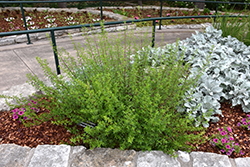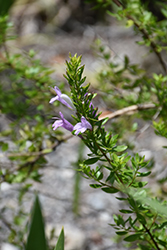Fri & Sat 8am - 8pm
Sun 8am - 7pm
Anytown, USA 12345
fax: 261.787.0463
e-mail: info@successgc.com


Plant Finder

Height: 3 feet
Spacing: 30 inches
Sunlight:
![]()
![]()
Hardiness Zone: 8a
Other Names: Rosemary Mint, Southwestern Oregano
Description:
A square-stemmed, bushy plant featuring aromatic, shiny, semi-evergreen leaves that are used as a culinary herb like oregano, but producing a stronger flavor; tubular lavender-pink flowers appear in summer and fall; may be overwintered indoors
Edible Qualities
Mexican Oregano is a perennial herb that is typically grown for its edible qualities, although it does have ornamental merits as well. The fragrant pointy green leaves which emerge light green in spring can be harvested at any time in the season. The leaves have a spicy taste and a strong fragrance.
The leaves are most often used in the following ways:
- Cooking
- Baking
- Seasoning
Features & Attributes
Mexican Oregano features showy clusters of lavender tubular flowers with pink overtones at the ends of the stems from late summer to early fall. Its attractive small fragrant pointy leaves emerge light green in spring, turning green in color the rest of the year. The brick red stems can be quite attractive.
This is a dense herbaceous evergreen perennial herb with a mounded form. It brings an extremely fine and delicate texture to the garden composition and should be used to full effect. This plant will require occasional maintenance and upkeep, and is best cleaned up in early spring before it resumes active growth for the season. It is a good choice for attracting bees and butterflies to your yard, but is not particularly attractive to deer who tend to leave it alone in favor of tastier treats. It has no significant negative characteristics.
Aside from its primary use as an edible, Mexican Oregano is sutiable for the following landscape applications;
- Mass Planting
- General Garden Use
- Herb Gardens
- Container Planting
Planting & Growing
Mexican Oregano will grow to be about 3 feet tall at maturity, with a spread of 3 feet. When grown in masses or used as a bedding plant, individual plants should be spaced approximately 30 inches apart. Its foliage tends to remain dense right to the ground, not requiring facer plants in front. It grows at a fast rate, and under ideal conditions can be expected to live for approximately 5 years. As an evegreen perennial, this plant will typically keep its form and foliage year-round.
This plant is quite ornamental as well as edible, and is as much at home in a landscape or flower garden as it is in a designated herb garden. It does best in full sun to partial shade. It is very adaptable to both dry and moist growing conditions, but will not tolerate any standing water. This plant does not require much in the way of fertilizing once established. It is not particular as to soil type or pH. It is somewhat tolerant of urban pollution. This species is not originally from North America. It can be propagated by cuttings.
Mexican Oregano is a good choice for the edible garden, but it is also well-suited for use in outdoor pots and containers. Because of its height, it is often used as a 'thriller' in the 'spiller-thriller-filler' container combination; plant it near the center of the pot, surrounded by smaller plants and those that spill over the edges. It is even sizeable enough that it can be grown alone in a suitable container. Note that when growing plants in outdoor containers and baskets, they may require more frequent waterings than they would in the yard or garden.

